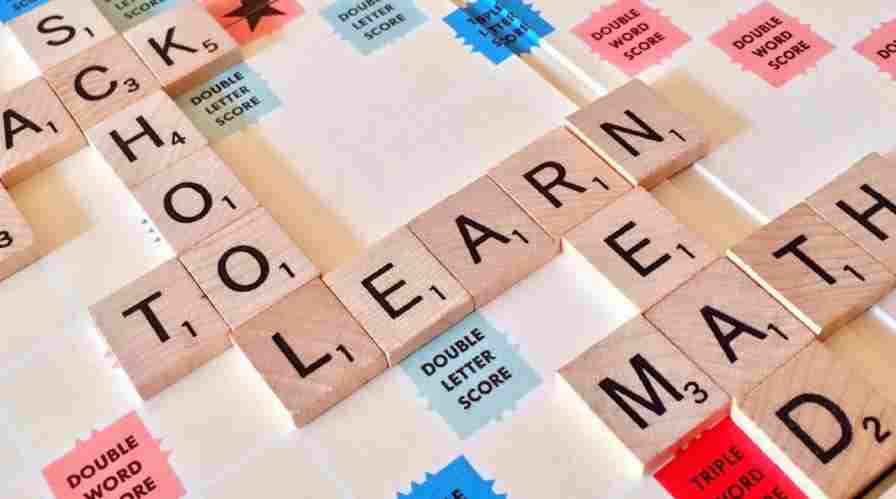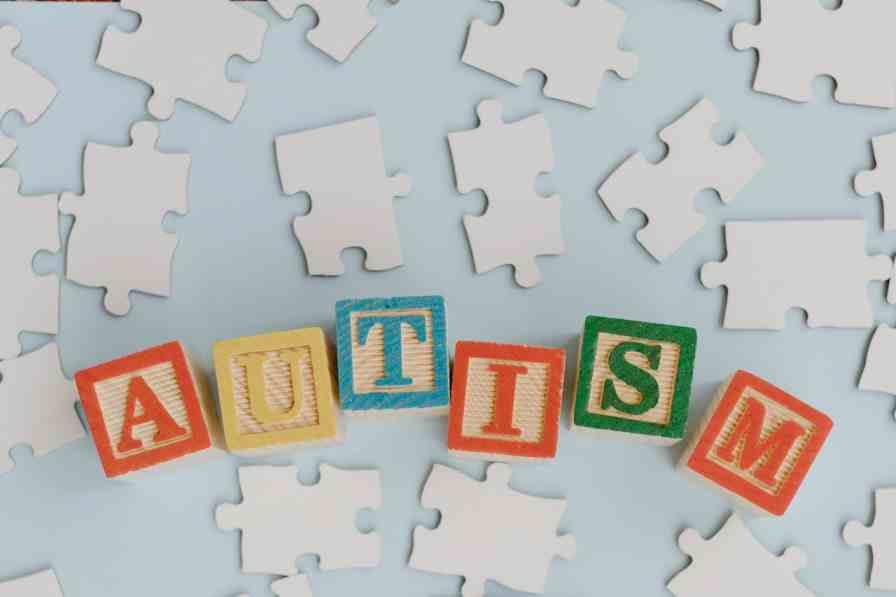
Table of Contents
Introduction -totally wackadoodle nyt
Puzzles have interested people for a long time. They are fun and help our brains stay sharp. One special puzzle is the “Totally wackadoodle nyt” puzzle from The New York Times (NYT). It’s known for being different and fun. Many people enjoy it. In this guide, we’ll explain what makes the “Totally Wackadoodle” puzzle unique, how it works, and why people like it so much.
What is the totally wackadoodle nyt?
The “Totally wackadoodle nyt” puzzle is a unique brain teaser from The New York Times. It’s known for being different and sometimes quirky. This puzzle mixes creativity and challenge in a way that sets it apart from regular puzzles. Instead of sticking to traditional formats, the “Totally Wackadoodle” puzzle is playful and unpredictable.
The name “Totally wackadoodle nyt” shows that the puzzle has funny and unusual clues. It’s meant to be a fun change from usual puzzles, offering a mix of humor, cleverness, and a bit of the silly.
You can also read about – Four Digits to Memorize NYT:Easy 4-Digit Memory Tips
You can also read our latest post.
Features of the “Totally wackadoodle nyt” puzzle:
- Unusual Clues: The “Totally wackadoodle nyt” puzzle uses unusual clues, not just simple hints. Instead of well-spoken hints, it uses playful language, puns, and creative wordplay. The clues might be troublemaking at first, but they’re meant to be fun and interesting. This makes you think in new ways and engage with the puzzle differently. For example, you might find clever word puzzles, subconscious messages, or pop culture references that need uneaten thought.
- Creative Solutions: The answers to the puzzle are just as imaginative as the clues. You might need to think creatively and try variegated approaches to solve it. There isn’t unchangingly one right answer, so you can explore various ways to find the solution. This encourages you to think outside the box and try variegated problem-solving strategies.
- Interactive Features: Some versions of the puzzle have interactive elements that make solving it increasingly engaging. This could include online hints, interactive clues, or polity forums where you can discuss strategies and share ideas. These features add a social speciality to the puzzle, making it increasingly dynamic and fun.
- Different Difficulty Levels: The puzzle is made for all skill levels. Whether you’re a seasoned puzzler or just starting, you’ll find challenges that match your abilities. It has various levels of difficulty, so you can progress at your own pace. This makes it wieldy for beginners while still challenging for experienced solvers.
- Interesting Themes: Each puzzle edition might have a different theme or story, such as funny situations or imaginative tales. This keeps the puzzle exciting and fresh, offering new contexts and settings. Themes can include fantasy worlds, historical events, or parodies, adding variety to the puzzle experience.
- Visual and Artistic Elements: Some puzzles include visual or artistic features, like illustrations or graphics. These add extra enjoyment and complexity to the puzzle. Artwork can also help with solving clues by providing additional visual information.
- Innovative Formats: The puzzle often tries new formats and styles, keeping things interesting. Each version might introduce new ways of solving, such as combining physical and digital elements or using unique challenge formats. These innovations make the puzzle stand out and keep solvers engaged.
- Personalization Options: Some puzzles let you customize your experience. This might mean adjusting the difficulty, choosing themes that interest you, or getting clues based on how you’re progressing. Personalization makes the puzzle more enjoyable and suited to your preferences.
- Community Engagement: The puzzle encourages community involvement through events like competitions or social media interactions. Engaging with others provides motivation and a sense of connection, and it’s a chance to learn from fellow solvers.
- Educational Value: Besides being fun, the puzzle can help develop skills like critical thinking and problem-solving. It might also offer educational content related to its themes, such as historical facts or artistic techniques.
- Special Editions: Occasionally, the puzzle releases special editions for holidays, events, or anniversaries. These versions have unique themes and challenges that celebrate specific occasions, adding extra excitement to the puzzle experience.
- Feedback and Improvement: The puzzle creators use feedback from solvers to make improvements. Suggestions from the community help refine future editions, making sure the puzzle stays enjoyable and relevant.
How to Solve the Totally Wackadoodle Puzzle
- Read the Clues: Carefully read all the clues. Look for unusual words or hints that might mean you need to think creatively. Write down patterns or themes you notice.
- Find Patterns: Look for repeated themes or patterns in the clues. This can make it easier to grasp the puzzle.
- Think Creatively: Use your imagination. Try different ideas and don’t be afraid to think outside the box.
- Break It Down: If the puzzle feels too big, split it into smaller parts. Solve one part at a time.
- Check Progress: Regularly see how you’re doing. If you get stuck, take a break and review your approach.
- Ask for Help: If you’re having trouble, ask others for hints or advice. Talking with others can help.
- Have Fun: Enjoy solving the puzzle. Celebrate small wins and give yourself breaks when needed.
- Keep Notes: Write down your thoughts and what you’ve tried. This helps you remember what worked and what didn’t.
- Be Flexible: If something isn’t working, try a different method or idea.
- Be Patient: Some clues might take time. Be patient and don’t hesitate to take breaks when needed.
- Use Resources: Use any extra tools or hints provided with the puzzle.
- Think About Past Puzzles: Remember what worked for similar puzzles before and use those ideas.
- Join the Community: Talk to others who are solving the puzzle for more tips and motivation.
- Enjoy the Process: Remember, solving the puzzle is about having fun and enjoying the challenge.
Why the Totally Wackadoodle Puzzle is So Popular
The “totally wackadoodle nyt” puzzle is loved for several reasons:
- Fun Entertainment: The puzzle is playful and quirky, making it a lot of fun. People enjoy the humor and creativity in each puzzle, which is a great way to spend time. It often includes pop culture references and playful scenarios that many people find entertaining.
- Mental Challenge: Besides being fun, the puzzle challenges your brain. It makes you think critically and creatively, helping to improve your problem-solving skills. The tricky clues encourage you to think outside the box, which sharpens your mind.
- Community Feel: The puzzle has an active online community. People share tips, discuss clues, and celebrate their achievements together. This sense of community leads to online groups where fans can exchange ideas and work together.
- Unique Experience: The “Totally wackadoodle nyt” puzzle is different from regular puzzles because of its unusual style. People enjoy the fresh and fun challenge it offers, which stands out from more predictable puzzles.
- Variety and Creativity: Each edition of the puzzle has different themes and creative solutions, keeping it interesting and exciting. This variety makes sure that each puzzle feels new and engaging.
- Personal Satisfaction: Solving a “Totally wackadoodle nyt” puzzle gives a strong sense of achievement. Overcoming tricky clues boosts confidence and provides a rewarding experience.
- Educational Benefits: The puzzle helps with learning by improving language skills, pattern recognition, and critical thinking. It’s sometimes used by teachers to make problem-solving and creative thinking fun for students.
- Appeals to All Ages: The mix of humor and creativity makes the puzzle enjoyable for people of all ages. Both younger and older solvers appreciate different aspects of the puzzle, creating a diverse group of fans.
- Tech-Friendly: New versions of the puzzle often include digital hints and interactive features, making it easier and more engaging to solve. This use of technology enhances the experience and keeps the puzzle up-to-date.
- Cultural Influence: The “Totally wackadoodle nyt” puzzle has influenced other puzzles and media. Its unique style has inspired similar puzzles and contributed to new ideas in puzzle design.
- Flexible Solving: You can solve the puzzle in many ways, whether on your own or with others. This flexibility makes it accessible and enjoyable for everyone.
- Collector’s Item: Some fans see the puzzle as a collector’s item. Limited editions or especially challenging puzzles are highly sought after, adding extra value to the puzzle-solving experience.
- Media Presence: The puzzle is featured in various media formats, including online platforms, mobile apps, and live events. This helps it reach more people and offers new ways to enjoy the puzzle.
The Evolution of the Totally Wackadoodle Puzzle
The “Totally wackadoodle nyt” puzzle has changed a lot over time. Here’s how:
- More Complex: Early puzzles were simpler, but now they are much harder. They have tricky clues and many layers of difficulty. Modern puzzles often need different problem-solving skills like pattern recognition and creative thinking. Some even have mini-puzzles within them.
- Interactive Features: Today’s puzzles often include online hints and forums where you can talk with others. Some puzzles now use augmented reality (AR) or virtual reality (VR) for a more interactive experience.
- Diverse Themes: The themes of the puzzles are now more varied and imaginative, from funny stories to fantastical settings. This keeps the puzzles fresh and interesting, drawing from popular culture, history, and fiction.
- Visual Elements: Modern puzzles often have art and graphics. These make the puzzle more visually appealing and add to the challenge. You might see detailed artwork or visual clues.
- Community Involvement: There is now a big online community where people discuss strategies, share tips, and work together on puzzles. This community also creates fan-made puzzles and unofficial challenges.
- Technology: Advances in technology have made puzzles more accessible. Digital puzzles might have interactive features like clickable hints and multimedia elements such as audio or video clues.
- New Designs: Puzzle designers now experiment with new formats and structures. This can include different layouts or combining various types of challenges, keeping the puzzles exciting.
- Educational Benefits: Modern puzzles often help improve skills like critical thinking and problem-solving. Some puzzles come with educational resources to support learning.
- Pop Culture Integration: The puzzles often include references to current events and popular media. This makes them more relevant and enjoyable for people who follow trends.
- Sustainability: Some puzzles now use eco-friendly materials and promote digital formats to reduce paper waste. They also support environmental causes.
- Personalization: You can now customize puzzles by choosing themes and difficulty levels, or adding personal touches. This makes the puzzle experience more unique.
- Collaborative Puzzles: There are now puzzles designed for teamwork, where multiple people work together. Some are featured in events or competitions, encouraging social interaction.
- Historical References: Some puzzles include historical themes or references. This adds an educational aspect and helps users learn about history.
- Cross-Media: Puzzles are now linked with other media like books, podcasts, or TV shows. This allows people to engage with puzzles in different ways.
- Influence on Puzzle Culture: The “Totally wackadoodle nyt” puzzle has influenced other puzzle designers and set new standards for creativity and complexity in the puzzle world.

Easy Tips for New Solvers -totally wackadoodle nyt
- Know the Puzzle: Learn how the puzzle works by looking at examples. This helps you understand what kind of clues and answers you might see.
- Start Simple: Solve the easier clues first. This helps you get comfortable with the puzzle and build confidence.
- Be Creative: Think of different ways to solve clues. The puzzle often needs creative thinking, so don’t be afraid to try new ideas.
- Join a Group: Look for online groups discussing the puzzle. You can get advice and assistance from others there.
Be Patient: If needed, take breaks and return with a clear mind. - Break It Down: If the puzzle seems too big, break it into smaller parts. Solve one clue or section at a time.
- Use Tools: Use dictionaries or search online if you need help with clues.
- Have a Plan: Decide how you want to solve the puzzle. Whether you start from the top or focus on certain clues, having a plan helps.
- Track Progress: Keep a list of which clues you’ve solved and which are still unsolved. This helps you stay organized.
- Celebrate Wins: Celebrate when you solve clues. Every small win helps you stay motivated.
- Enjoy It: Remember, the puzzle is meant to be fun. Keep a positive attitude and enjoy solving it.
- Learn from Each Puzzle: Every puzzle teaches you something new. Notice what works well and use that knowledge for the next puzzle.
- Find More Help: Look for books, blogs, or videos about solving puzzles. They can give you more ideas and tips.
- Ask for Help: If you’re stuck, ask others for help. Different viewpoints can help you solve tough clues.
- Keep It Neat: Keep your work area tidy and free from distractions. This helps you think better and solve the puzzle faster.
Conclusion – totally wackadoodle nyt
The “Totally wackadoodle nyt” puzzle from The New York Times is a unconfined example of how fun and creative puzzles can be. It has funny clues and interactive features that make solving it enjoyable for everyone. Whether you’re a puzzle expert or just like solving them for fun, this puzzle is a fun challenge. Have fun with the quirky clues and let your imagination run wild!
The “Totally wackadoodle nyt” puzzle is a fun and heady example of how puzzles can be both challenging and enjoyable. So, grab a pencil and swoop into the wacky world of this puzzle—you might find some unconfined surprises!
FAQs – totally wackadoodle nyt
What is the “Totally Wackadoodle” puzzle?
It’s a fun puzzle with weird clues and creative answers. You need to think in unusual ways.
How do I start with the “Totally Wackadoodle” puzzle?
Look at sample puzzles to see how they work. Start with easy clues and then try harder ones as you get better.
Where can I find “Totally Wackadoodle” puzzles?
You can find them in puzzle books, on websites, and in some newspapers or magazines.
Do I need special skills to solve the “Totally Wackadoodle” puzzle?
No special skills are needed. Just use your imagination and be unshut to variegated solutions.
How can I get largest at solving the “Totally Wackadoodle” puzzle?
Practice a lot, learn from each puzzle, and join puzzle communities for tips.
What if I get stuck on a clue?
Take a unravel and come when later. Try breaking the track into smaller parts or ask for hints online.
Is there a specific way to solve the “Totally wackadoodle nyt” puzzle?
There’s no one way, but start with easy clues and unravel the puzzle into smaller parts.
Can I get hints or solutions for the “Totally wackadoodle nyt” puzzle?
Yes, you can find hints or solutions online or in some puzzle books.
How long does it take to solve a “Totally Wackadoodle” puzzle?
It might take anywhere from a couple of hours to several days. Be patient and alimony trying.
What mistakes should I stave when solving the “Totally Wackadoodle” puzzle?
Don’t overthink clues or get stuck on one track for too long. Stay relaxed and open-minded.
How can I join the “Totally wackadoodle nyt” puzzle community?
Join online forums or social media groups where people discuss these puzzles.
Can people of all month enjoy the “Totally Wackadoodle” puzzle?
Yes, people of all month can enjoy it. It’s unconfined for anyone who likes creative challenges.
Are there any tools or resources to help with solving the “Totally wackadoodle nyt” puzzle?
Use dictionaries, online searches, and puzzle-solving books for help. Online communities can moreover offer support


